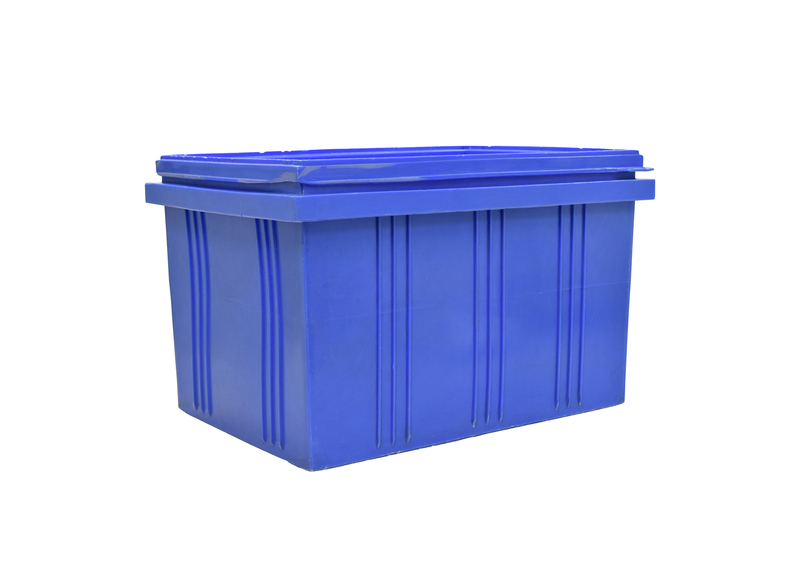Tools and Tactics for Lifting Heavy Stuff Alone
Lifting heavy stuff by yourself requires more than just muscle and bravado. With the right knowledge, equipment, and techniques, you can tackle most solo lifting challenges safely, efficiently, and with minimal risk of injury or property damage. Whether you're moving furniture, appliances, or construction materials, understanding the tools and tactics for lifting heavy stuff alone will empower you to get the job done.
Understanding the Challenges of Lifting Heavy Items Solo
Attempting to lift or move heavy objects by yourself exposes you to certain risks. Without proper support, you are more prone to strain, back injuries, and accidents. Recognizing the challenges helps in mitigating these risks by applying safety-first strategies and choosing the best lifting tools for heavy objects.
Common Risks When Lifting Alone
- Musculoskeletal Injuries: Strains, sprains, and back injuries top the list.
- Improper Technique: Lifting with your back instead of your legs increases risk.
- Object Slipping or Dropping: Especially dangerous when balance is lost.
- Property Damage: Risking dents, scratches, or even structural harm.
- Fatigue and Overexertion: Trying to do too much increases error chances.
That's why it's essential to equip yourself with proven tactics and the right heavy lifting tools to tackle these jobs alone.

Smart Tools for Lifting Heavy Stuff By Yourself
Thanks to innovation, there is a broad selection of devices crafted to make solo lifting manageable and safe. From moving straps to wheeled dollies, the right lifting aids are absolute game-changers.
Dollies and Hand Trucks
Dollies and hand trucks are classic tools for moving bulky objects without excessive strain. These come in different types:
- Platform Dollies: Flat surfaces on wheels, ideal for boxes or flat furniture.
- Backsaver Hand Trucks: Vertical frames with wheels, useful for stacking and tilting objects for easier rolling.
- Convertible Hand Trucks: Adjustable to suit different configurations and weights.
Pro Tip: Always ensure your dolly or hand truck has non-slip surfaces and sturdy wheels suitable for your floor type to maximize control and minimize accidents.
Lifting Straps and Harnesses
Ergonomic lifting straps distribute weight away from your hands and arms, allowing you to leverage your body's strength and core stability. Popular options include:
- Forearm Forklifts: Padded straps loop under objects, helping you lift with your legs instead of your back.
- Shoulder Dolly Harnesses: Let you harness your shoulder and torso muscles for heavier loads, freeing your hands.
These tools are especially effective for moving furniture or appliances like refrigerators and washing machines.
Furniture Sliders and Gliders
For moving heavy items across flat surfaces, furniture sliders (sometimes called gliders or moving pads) help reduce friction between objects and floors. Simply place the sliders beneath the corners or edges, then glide the item into position. This method reduces lifting and prevents floor damage.
Winches, Hoists, and Pulley Systems
If you're lifting in place, such as in a garage or workshop, mechanical aids like winches, hoists, and pulleys can multiply your lifting power. Installing a chain hoist or electric winch enables you to lift and suspend extremely heavy objects with minimal effort.
- Ceiling or Beam-Mounted Hoists: Perfect for engines, safes, or machinery.
- Portable Winches: Flexible enough to assist in confined or outdoor spaces.
Leverage Bars and Pry Bars
Sometimes, you don't need to lift the full weight. Leverage bars, like pry bars or crowbars, help shift bulky objects by giving you the torque needed to lift one side, slide in a dolly, or insert sliders.
Stair Climbing Tools
If you must navigate stairs alone, invest in a stair climbing dolly or powered stair climbing cart. These have wheels or treads designed to roll over stair edges safely, saving your back and reducing the risk of falls.
Specialized Lifting Jacks
Hydraulic lifting jacks let you elevate heavy items incrementally. These are great for raising appliances just enough to get sliders or dollies underneath or for subtle adjustments during installation.
Protective Gear
- Work Gloves: Get a better grip and guard against scrapes.
- Back Support Belts: Help maintain good posture and reduce risk of injury.
- Steel Toe Boots: Protect feet if something drops accidentally.
Essential Tactics for Lifting Heavy Objects Alone
Having the best equipment for lifting heavy things alone is only half the battle. Understanding and applying correct lifting techniques and strategies are equally important.
Plan Your Move Step by Step
- Clear your path of all obstacles and tripping hazards.
- Identify potential resting points or support surfaces.
- Measure doors, elevators, and passageways to ensure your item fits.
- Have the right moving tools for heavy lifting at hand before starting.
Apply Proper Lifting Techniques
- Bend at the knees, not the waist.
- Keep the object close to your body.
- Use your leg and core muscles to lift, not your back.
- Lift smoothly--avoid sudden jerks or twists.
- If the object is too low, tilt or roll it upright before lifting.
Break Down Loads When Possible
If the object can be disassembled, do it. Remove drawers from dressers, legs from tables, or contents from cabinets. Splitting the load makes each piece easier and safer to move solo.
Use Leverage and Momentum
Don't try to muscle through--it's often more efficient to slide, tilt, or roll rather than lift. Glide item edges onto sliders or roll them over pipes or dowels Egyptian-style for very heavy loads.
Take Breaks
Lifting heavy equipment alone can be exhausting. Pause frequently to rest and reassess your strategy, especially on longer jobs.
Know Your Limits
Never lift more than you can safely handle alone. If an object exceeds 80 pounds and cannot be transported with lifting devices, consider seeking help, even if it's just for the trickiest section.
Secure Loads During Transport
Use ratchet straps, ropes, or bungee cords to secure items once on dolly wheels or in vehicles. This prevents movement and tipping during the final haul.
Additional Tips for Moving Heavy Loads Alone
- Map Out an Exit Route: A clear, well-planned path prevents mishaps.
- Utilize Ramps: Even simple plywood ramps help on stairs or entries.
- Aim for Even Weight Distribution: This keeps items balanced as you move them.
- Protect Your Home: Blankets or cardboard sheets prevent scratched floors and walls.
- Keep Communication Handy: Have a phone on you in case of emergencies.
Top Tools for Lifting and Moving Heavy Things
Looking for the ultimate toolkit? Here are the best tools for lifting heavy objects alone that deserve a place in every DIY enthusiast's arsenal:
- Furniture Dolly/Hand Truck
- Lifting Straps (Shoulder Dolly/Forearm Forklift)
- Furniture Sliders
- Hydraulic Jack
- Ramps
- Work Gloves and Back Belt
- Moving Blankets
- Leverage Bar or Pry Bar
- Stair-Climbing Cart
These devices offer enhanced safety and efficiency--investing in them is essential for frequent solo movers or anyone facing a big move.

When to Ask for Help
Even with the best lone lifting techniques and equipment, some items simply require two or more people due to size, awkwardness, or immense weight. Examples include:
- Grand pianos or large safes
- Oversized sofas or sectional furniture
- Large machinery or construction materials exceeding 100 pounds
- Glass-top tables or delicate artwork
When in doubt, don't risk it. Safety is always the best policy.
Final Thoughts: Solo Heavy Lifting is Possible with the Right Approach
Learning how to lift and move heavy objects alone is about more than brute force. By combining proper planning, modern lifting tools, and safe working techniques, you can tackle the majority of heavy lifting jobs without outside help--while protecting yourself and your property. So next time you need to lift something heavy by yourself, refer to this guide, gear up with the right equipment, and move with confidence.
Remember: The most important part of any heavy lifting job is ensuring your own safety above all else. If you prepare properly, use the right tools, and know your own limits, solo lifting can be safe, efficient, and even satisfying!
Related Queries:
- Best tools for lifting heavy furniture by yourself
- How to move appliances alone safely
- Top tactics for lifting heavy boxes without help
- Safety tips for lifting and moving heavy objects
- Essential equipment for solo heavy lifting tasks
By following these tools and tactics for lifting heavy stuff alone, moving day--or any big project--will become a much more manageable and safer experience.



